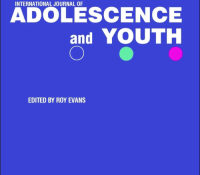
tandfonline.com har udgivet en rapport under søgningen “Teacher Education Mathematics”: ABSTRACT ABSTRACT There is a growing interest in research on the potential effects of Internet addiction [IA] on students’ scholastic lives. Given that there is no research on this subject in Morocco, this cross-sectional study fills the gap by examining the prevalence of Internet Addiction among Moroccan high school students and its possible association with scholastic performance and other socio-demographic factors. Self-administered questionnaires were distributed to 305 students, consisting of sociodemographic questions and Young’s Internet Addiction Scale. Chi-square, Independent sample t-tests, and One-Way ANOVA tests were conducted. This quantitative study reveals that IA prevalence among Moroccan high school students is 15.80%. Poor academic performance, being female, having a computer and Internet access, spending excessive time online and having parents with… Continue Reading →
Like this:
Like Loading...
eric.ed.gov har udgivet: The flipped classroom model has become more popular and one of the focus of many researchers and teachers in the recent years. The aim of current study is to explore the effect of flipped classroom model on students’ achievements in the new SAT 2016 mathematics skills (Heart of Algebra, Problem solving and data analysis, and Passport to Advanced Math) for the eleventh grade Emirati female students in Al Ain, United Arab Emirates. Specifically, this study aims at determining whether there was a statistically significant difference in student achievements in the new SAT mathematics skills between two groups of grade 11 students. Thus, pretest/posttest quasi-experimental design was applied. The experimental group was taught by flipped classroom model, and the control group was taught by traditional instruction methods. The… Continue Reading →
Like this:
Like Loading...
eric.ed.gov har udgivet: Grading is one of teachers’ greatest challenges and most important professional responsibilities. Educators are unclear on whether standards-based grades or traditional-based grades do a better job of accurately reflecting what students have learned, so the purpose of this study was to understand the relationship between classroom grades and scores on the Scholastic Math Inventory (SMI) assessment. The individuals were sixth-, seventh-, and eighth-grade mathematics students from five different middle schools in the same district as they took the SMI assessment. There were about 500 students in the standards-based grading system and about 1,900 students in the traditional grading system. Link til kilde
Like this:
Like Loading...
